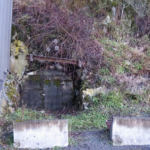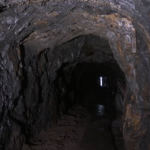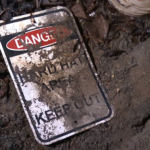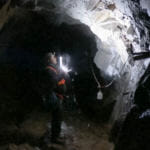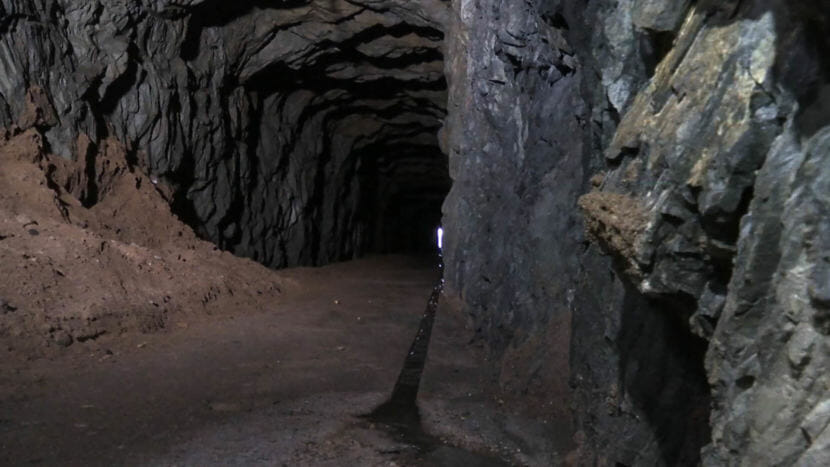

Curious Juneau stars you and your questions. Every episode we help you find an answer. Catch up on past episodes, or ask your own question on the Curious Juneau page.
Ever notice a set of doors on either side of Juneau’s Telephone Hill? There’s one next to the State of Alaska Facilities Center. The other one’s next to the parking garage at Second and Main.
Guess what? They connect.
City Manager Rorie Watt graciously unlocks the set of doors that cover exposed rock next to the transit center parking garage.
“Welcome to a little-known but infamous piece of our transportation infrastructure in downtown Juneau,” Watt says as he swing the doors open. “This is the Second Street Pedestrian Tunnel.”
The tunnel resembles a historic mine shaft. There are timber cross-braces shoring up the entrance. But this isn’t from mining; it’s actually a lot newer.
Watt ventures inside.
“I think the idea at the time is it would make a nice connection,” Watt said, using a flashlight to trace the edges of the 7-foot-by-10-foot opening. “But when the tunnel was built, you can just see that this is maybe eight feet, rough finished. It’s not exactly inviting to the public.”
The tunnel runs about 350 feet. The other end is barely visible in the inky blackness. We’re underneath what’s known as Telephone Hill. This tunnel’s actually a continuation of Second Street, which abruptly ends at Main Street. But it follows the street’s legal right-of-way to connect Main Street to Willoughby Avenue.
It’s what the original planners had in mind back in the 1970s.
“They thought it would be interesting and a short cut to go through there,” recalled Don Gotschall, an 83-year-old retired civil engineer. He said the brainchild of the tunnel was Hugh Macaulay, chief engineer at Alaska Electric Light and Power.
“He liked to do things the hard way,” Gotscall said.
In a March 4, 1976, letter to the city, Macaulay pitched the tunnel idea.
The letter survives in AEL&P’s archives.
“I’ve heard some rumors floating around and I was a little curious myself, so I went back to our files and archives and came across a folder of the tunnel down there on Second Street,” Eric Eriksen, the power company’s head of transmission and distribution, said in a phone interview.
Macaulay wrote that the power company planned to bore a tunnel for a high-voltage power line.
He proposed making it large enough for pedestrians.
“He described the project and some potential benefits and in that he went on to inquire if the city would be interested in partnering with the project,” Eriksen said.
Macaulay wanted the city to split the estimated $60,000 cost of the tunnel.
That dollar amount is what Eriksen finds amusing.
“You know, I don’t think we’d probably even get started boring for $60,000 today,” he said.
Minutes from a 1976 meeting record naysayers on the Assembly balking at the expense. They were overruled and the funding was approved on a 5-3 vote.
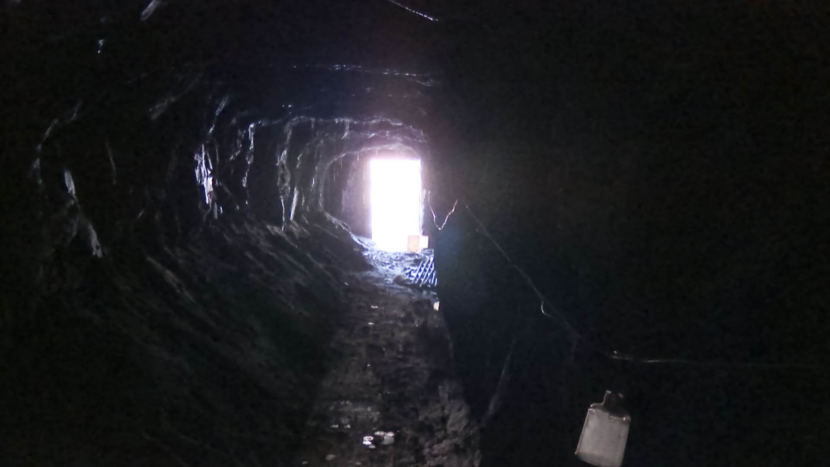
From here the record gets murkier. It’s not clear when exactly the tunnel was opened to the public or for how long.
Gotschall says it couldn’t have been for very long.
“As I recall, what they did was they opened it up and they found that the rock is so fractured under there that it leaked water and wasn’t real attractive for people going through,” Gotscall said. “You had to wear rain gear.”
The tunnel was quietly sealed. Wags referred to it then and now as Overstreet’s Underpass after Bill Overstreet, the mayor at the time.
Juneau’s current Mayor Ken Koelsch was hired as a high school teacher in the late 1960s by Bill Overstreet, then the school superintendent. Koelsch recalled there were always doubters and it wasn’t surprising when the tunnel was boarded up.
“It was just one of these pipe dreams and it was like, ‘OK, great you’re going to put in an Overstreet Underpass, it’s going to get a lot of use and it just faded after that and we haven’t come back to that,” the mayor said. “But it’s always in the memory bank of a lot of people here.”
Koelsch says he’d entertain reopening the tunnel, especially if the city ever decides to build a new city hall over the parking garage next to the Second Street entrance.
“I think it’s a great idea,” he said. “I would like to see us actually consider it. But I think the momentum will come when we start with the new city hall.”
The tunnel continues to serve AEL&P’s purpose: a 69,000 volt power line connects its two downtown substations, making the downtown grid more reliable.
And 25 years later, the city was finally able to capitalize on its investment. In 2001, a 16-inch water main was installed.
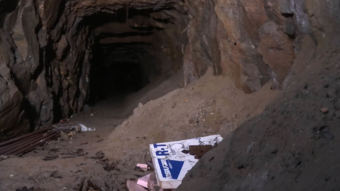
City Manager Rorie Watt says proposals to reopen the tunnel to the public are sometimes floated, but he’s skeptical it could ever work.
“I think there’s a charm to the idea that will never go away,” Watt said. “But it’s balanced out by the practicality of what it actually is.”
So for now the Second Street Tunnel – or Overstreet’s Underpass if you prefer – continues to convey water and power, but not people, through the rock beneath Telephone Hill.

